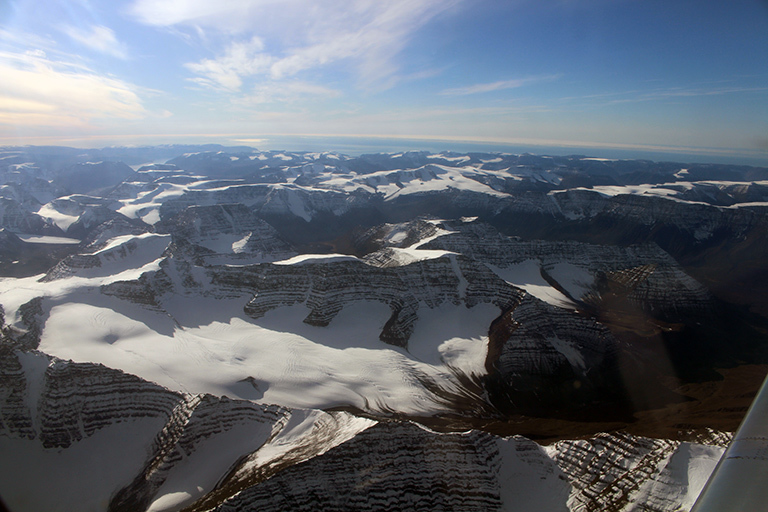Ask NASA Climate | October 17, 2016, 11:09 PDT
Making lemonade out of climate change
Science unveils the sheer beauty of Planet Earth

Flying low over Greenland's coastline in NASA's modified G-III aircraft.
You might expect that being a science writer primarily focused on climate change and climate science could put me in a bad mood. You can see this if you read the comments on many of my blogs, on our NASA Climate Change Facebook page and on my TEDx video. Many commenters think I should express more alarm about our changing climate.
Yes, climate change is happening, it’s real and it’s serious. I know it and my climate scientist friends know it. But I’m just not the kind of person who can spend my days in fear, despair and anger. I just can’t. Fundamentally, it’s not who I am.
What works in my life is finding something positive and then taking action in that positive direction, which explains how I found myself traveling to Kangerlussuaq, Greenland, to support NASA’s Oceans Melting Greenland team in the field. See, NASA is the exploration leader — on this planet and beyond. And believe me, Greenland is out there. It’s so remote, so unknown, so unpopulated, that even after thousands of years of human exploration of our planet and hundreds of years of scientific exploration we still know very little about the ocean surrounding Greenland’s coastline and the water inside its long, ice-carved fjords. Greenland is unusual, a unique environment unto itself. The ice sheet is so vast, it makes its own weather patterns.
So, of course, with NASA’s prominent role in Earth remote sensing and climate change and our capacity to explore the unknown, we’d be the first ones to fly right up into those exceptionally remote fjords to measure the ocean water there. As scientists, decoding the natural world is our way of taking meaningful positive action. It’s our way of caring. We care about the warm water that reaches up Greenland’s icy coastline and melts the ice sheet into the water. We care, so we go there and witness. We go there and we observe. We go there and we measure. And all the while, we feel like we’ve made an effort, we’ve done good work.
And so I flew with Team OMG on a modified NASA G-III aircraft into uncontrolled airspace to places where no other aircraft had flown before, up into those narrow and steep ice-covered fjords, winding in and out, up and down, over and through to observe and measure, like scientists do.
As I was working, I also got to see the brilliant white ice carve its way through steep brown valleys into open ocean water. I saw the glorious expanse of white upon deep blue going on and on and on below us as we flew just 5,000 feet above the winding coastline. It was extraordinary. And this might seem odd to you, but I felt joyous. Yes, I did. Joyous.
For there is something undeniable about the sheer beauty of this planet, and any time you get to experience it is a moment to feel exuberant and alive.
Check out this video of Team OMG celebrating its accomplishments.
Thanks for reading this blog.
Laura
